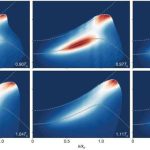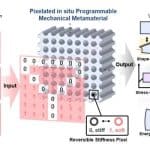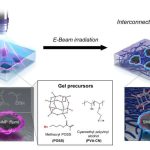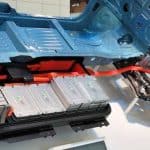Battery manufacturers, nonprofits, local governments and others can share their experiences with and insights into battery recycling with the U.S. EPA during work sessions that are set to begin in March. The EPA invited battery stakeholders to attend this year’s sessions during the Consumer Technology Association’s CES 2024 trade show last month in Las Vegas. […]
Metals Tech
Battery manufacturing project develops novel laser patterning process to alter electrode microstructure
Gotham City’s Dark Knight boasts an impressive collection of technological marvels, but the superhero scientists at the U.S. Department of Energy’s (DOE’s) National Renewable Energy Laboratory (NREL) have cutting-edge capabilities of their own. A recent battery manufacturing project—affectionately called BatMan—has developed a novel laser patterning process to alter the microstructure of battery electrode materials. The project brings […]
Quantum research sheds light on the mystery of high-temperature superconductivity
An international team of scientists has made a new discovery that may help to unlock the microscopic mystery of high-temperature superconductivity and address the world’s energy problems. In a paper published in Nature, Swinburne University of Technology’s Associate Professor Hui Hu collaborated with researchers at the University of Science and Technology of China (USTC) in a new experimental […]
Research pinpoints factors for better battery design
You’ve probably experienced the dread of a suddenly dead phone that is glacially slow to recharge. Add to that earbuds or laptops that die at the most inconvenient times. And perhaps you’ve delayed shopping for an electric car because of limited cruise range (or high price). These battery breakdowns and charge collapses are because of […]
Research team develops metamaterial to enable real-time shape and property control
Inspired by the remarkable adaptability observed in biological organisms like the octopus, a breakthrough has been achieved in the field of soft robotics. A research team, led by Professor Jiyun Kim in the Department of Materials Science and Engineering at UNIST has successfully developed an encodable multifunctional material that can dynamically tune its shape and […]
Resting found to boost performance of lithium metal batteries
Next-generation electric vehicles could run on lithium metal batteries that go 500 to 700 miles on a single charge, twice the range of conventional lithium-ion batteries in EVs today. But lithium metal technology has serious drawbacks: The battery rapidly loses its capacity to store energy after relatively few cycles of charging and discharging—highly impractical for […]
EVs that go 1,000 kilometers on a single charge: New gel may make it possible
Futuristic advancements in AI and health care stole the limelight at the tech extravaganza Consumer Electronics Show (CES) 2024. However, battery technology is the game-changer at the heart of these innovations, enabling greater power efficiency. Importantly, electric vehicles are where this technology is being applied most intensely. Today’s EVs can travel around 700km on a […]
3D printed nanocellulose upscaled for green architectural applications
For the first time, a hydrogel material made of nanocellulose and algae has been tested as an alternative, greener architectural material. The study, from Chalmers University of Technology in Sweden and the Wallenberg Wood Science Center, shows how the abundant sustainable material can be 3D printed into a wide array of architectural components, using much […]
Japan’s electric vehicle transition by 2035 may be insufficient to combat the climate crisis, but there are solutions
Researchers at Kyushu University have found that Japan’s current policy of stopping the sale of gas vehicles by 2035 and transitioning only to hybrids and electric vehicles may be insufficient to reduce the country’s CO2 emissions and prevent it from reaching its decarbonization target goals. In fact, emissions may temporarily increase. The team’s analysis showed […]
Self-extinguishing batteries could reduce the risk of deadly and costly battery fires
In a newly published study in Nature Sustainability, we describe our design for a self-extinguishing rechargeable battery. It replaces the most commonly used electrolyte, which is highly combustible—a medium composed of a lithium salt and an organic solvent—with materials found in a commercial fire extinguisher. An electrolyte allows lithium ions that carry an electric charge […]










